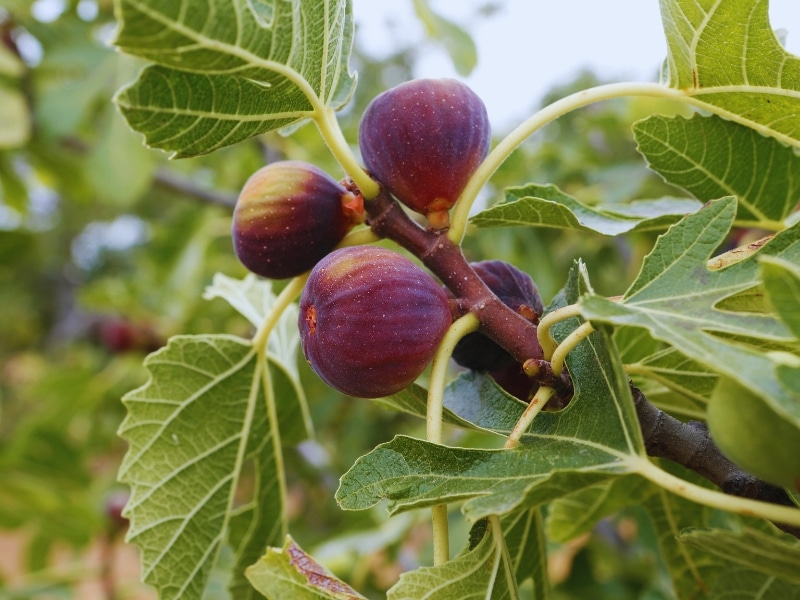Fig tree pruning isn’t just about tidying up the branches — it’s a key move that shapes the way your tree grows, fruits, and survives the seasons. If you’re growing figs in your Aussie backyard, knowing when and how to prune can be the difference between a thriving tree and one that struggles. Done right, fig tree pruning delivers long-term rewards that go well beyond appearance.
In this blog, you’ll get a straight-talking breakdown of what fig tree pruning can actually achieve, where folks often go wrong, and how to get better bang for your buck. We’ll also walk through signs your tree needs attention, seasonal timing, and common myths that trip up even seasoned gardeners.
What changes after fig tree pruning?
Pruning shapes how your tree develops — and it happens faster than you might think. Here are the early and long-term shifts to expect:
- Faster, stronger regrowth: Cutting branches stimulates new shoots, which tend to grow faster and more vigorously. You’ll see denser foliage and better balance.
- More consistent fruiting: New branches often bear more fruit. Pruning encourages a cycle of renewal, which leads to higher-quality figs each year.
- Improved airflow and light: Thinner canopies let in more sun and air, which reduces fungal issues and supports healthier growth.
- Smarter use of space: Fig trees can sprawl if left alone. Pruning keeps them compact, easier to harvest, and less prone to breaking under weight.
Ignoring pruning often leads to overgrowth, tangled limbs, and uneven fruit production — all signs your tree’s working harder than it should.
Why does incorrect pruning create bigger problems?
Fig trees are hardy, but poor pruning causes lasting damage. Here are the common risks and consequences:
- Wrong timing stunts fruit cycles: Pruning too late or too early can cut off fruiting wood, meaning fewer or no figs for the season.
- Over-pruning weakens structure: Stripping too much at once can expose the tree to sunburn and leave it too open to pests and disease.
- Unbalanced cuts cause leaning or splitting: If one side is heavily pruned while the other’s untouched, the tree may lean or drop branches.
- Missed disease or dead wood: Skipping these signs during pruning leads to rot, fungus, or slow dieback.
Many gardeners underestimate how precise fig tree pruning needs to be. A rushed job often creates more mess than it clears.
When is the best time to prune fig trees?
Timing is key, and in Australia, that usually means winter. Here are the seasonal guides to help you plan it right:
- Winter (ideal time): Prune when the tree is dormant — no leaves, no sap flow. This reduces stress and sets the shape for spring growth.
- Late autumn (cautious light trim): Light thinning is okay, but hold off heavy cuts until full dormancy.
- Early spring (only for damage control): Use this window to remove broken or frost-bitten limbs before new growth starts.
- Avoid summer and peak fruiting: Cutting in hot months causes stress, especially if the tree is actively bearing fruit or facing water pressure.
To keep your whole yard healthy, review these cost-effective tree pruning solutions that fit both small and large properties.
Who benefits most from regular fig tree pruning?
Anyone growing a fig tree gains from pruning, but some situations make it more critical. Here are the homeowners and gardens that see the biggest wins:
- Urban yards with limited space: Controlled growth keeps the tree from crowding out neighbours or damaging fences.
- Older fig trees with heavy limbs: Older trees become dense and may crack under their own weight. Pruning reduces risk without chopping it back too far.
- Fruit lovers chasing bigger harvests: Pruning stimulates new fruiting branches, making it easier to get quality figs every season.
- Low-maintenance gardeners: Trees that are pruned well are less messy and easier to manage — no more snaking branches across footpaths.
The gains aren’t just visual — they’re practical. Pruned trees are cleaner, safer, and easier to manage year-round.
Which tools and techniques work best for fig tree pruning?
You don’t need fancy gear, but technique matters more than most think. Here are the tools to use and habits to form:
| Tool | Use | Best For |
| Bypass secateurs | Clean cuts on small branches | Young shoots and tip work |
| Loppers | Thicker wood, up to 5cm diameter | Middle-sized growth |
| Pruning saw | Heavy limbs | Mature or neglected trees |
| Alcohol spray | Sterilising blades | Preventing disease spread |
Here are the top techniques that keep trees healthy:
- Use clean tools: Always disinfect before and after to avoid disease.
- Cut on an angle, just above a node: This helps the tree heal faster and directs new growth outward.
- Don’t remove more than one-third in a season: Over-pruning leaves the tree stressed and stunted.
- Step back every few cuts: Take breaks to view the shape and avoid unbalanced results.
Following these steps makes pruning fig trees less daunting and more rewarding over time.
Can fig tree pruning save a declining tree?
Absolutely — but only with the right approach. Here are the ways pruning revives underperforming trees:
- Removing dead wood redirects energy: The tree can stop wasting resources and focus on new growth.
- Opening up crowded centres: Dense canopies trap moisture and shade inner limbs. Pruning breaks this cycle.
- Shaping for sunlight: Better exposure means stronger branch development and a comeback for neglected trees.
- Clearing pest-attracting growth: Thinning can stop infestations before they take over.
Getting the most from your fig tree year-round
If pruning still feels like a stab in the dark, you’re not alone. Many fig tree owners end up second-guessing every snip. That’s where experience comes into play. For a better understanding of timing, shaping, and results, you might want to talk to The Yard about your next project — a soft chat can give you the confidence to move ahead. Whether you’re keen to DIY or bring in a pro, the key is knowing what you’re aiming for — and when to stop.


